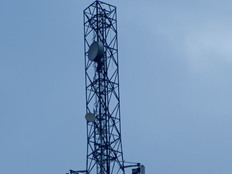Agencies Reach Agreements on Network Modernization Plans
In the past few weeks, several large and midsize agencies have either issued task orders under EIS for various network modernization projects or updated their progress for doing so.
- The Labor Department issued $887 million worth of task orders to Verizon to substantially modernize its network infrastructure, Nextgov reports. “They involve efforts to fully revamp DOL’s IT infrastructure and network architecture, improve its audio and web conferencing services, and support the deployment of unified communications services spanning the department’s thousands of end-users, among other tasks,” the publication notes.
- The Department of Housing and Urban Development made three task orders with a total potential value of $97.8 million, FCW reports, including for data support services for its CIO office and managed trusted internet protocol services (MTIPS) for the Government National Mortgage Association.
- The Nuclear Regulatory Commission expects to complete its transition to EIS by the end of 2021, FedScoop reports, and has embraced multiprotocol label switching, unified collaboration and wireless technologies.
RELATED: What do you need to know about software-defined networking?
Agencies Need to Make More Progress on EIS Transitions
Despite the issuing of recent task orders, many agencies are lagging in their transitions to EIS.
“We’re behind,” Hill told FedScoop. “There’s about 7 million services still remaining on the legacy contracts to transition. So that’s a lot of inventory to move. And we have right now still remaining… 66 solicitations that still have no task order words as of July 31,” noting that there are some contract awards since then that have not been reported.
Hill said that the GSA extended the deadline to transition to EIS to give agencies more time to make a complex switch, not as a reason to delay awarding new task orders under EIS, as many have done. GSA is working with all agencies to make the switch and help them upgrade their networks.
“We have some agencies that are out there that are completing their transition, which is great,” Hill said. “And they got out there in front and did what they needed to do. But we’re also doing some things to help those agencies that haven’t.”
GSA created the Risk Assessment For Transition (RAFT) working group, which convenes on a biweekly basis to “help agencies make a realistic assessment of how long their transition will take.”
GSA is developing a contingency plan to keep services running if agencies miss transition deadlines. “The RAFT provides really more of a best-case scenario for them, the perfect-world type scenario that if you did all these things, this is the timeframe,” Hill said. “And even going through that process, agencies are like, ‘Whoa, it’s going to take some time.’”
“It takes time to replace those old technologies with new technologies,” Hill told FedScoop.
He added that “we also have to be concerned about where we’re at today with the pandemic, there are challenges with supply.”
However, GSA is not going to offer agencies another extension. “There are no plans to change any dates,” he said. “When we have special mission requirements that need special support, we address those things in a separate fashion. But we’re not going to change any dates.”
DIVE DEEPER: Learn everything you need to know before installing SD-WAN at your agency.










